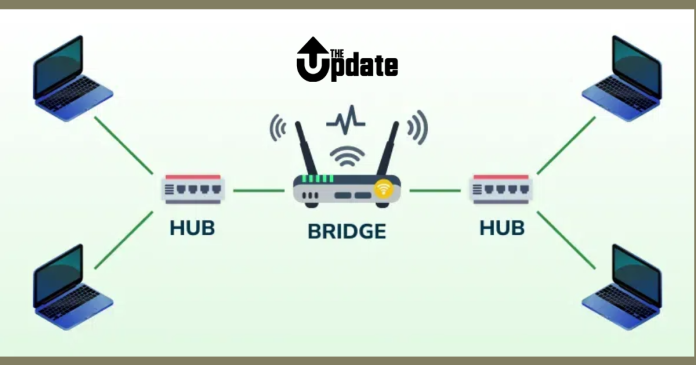A bridge in computer networking is a device that connects and filters traffic between two or more network segments, operating at the data link layer (Layer 2) of the OSI model. Its primary purpose is to divide a large network into smaller segments to improve performance and reduce collisions.
Functions of a Bridge
- Traffic Filtering:
- Bridges examine data packets and decide whether to forward, filter, or discard them based on their destination.
- Collision Reduction:
- By segmenting networks, bridges help reduce traffic collisions in Ethernet networks.
- Learning MAC Addresses:
- Bridges maintain a table of MAC addresses to forward packets to the correct destination efficiently.
Types of Bridges
- Transparent Bridge: Operates silently and forwards packets without user intervention.
- Source Routing Bridge: Used in token ring networks, where the source device provides routing information.
- Translation Bridge: Connects networks with different communication protocols, such as Ethernet and Wi-Fi.
Advantages of Bridges
- Reduces traffic by dividing networks.
- Enhances network performance by isolating segments.
- Increases network scalability by adding more segments.
Disadvantages of Bridges
- Slower than switches as they analyze every frame.
- Inefficient in large networks due to limited scalability.
- Cannot handle complex routing like routers.
Use Case
Bridges are ideal for small or medium-sized networks where segmentation and traffic control are needed without the complexity of routers.
In summary, a bridge is a simple yet powerful tool for improving network efficiency by connecting and managing data flow between segments.


